We all are storytellers, right? In letters, where we are persuasive or loving or newsy. In emails, where we are planning or collaborating or gossiping. In journals, where we are unfiltered, revealing our inner selves. Or, at least, in our vision of ourselves.
Even in the most mundane of documents, our true selves are revealed. Imagine how much you could learn by reading the itemized listings of someone’s credit card bill. My spiral-bound notebook of daily to-do lists is a diary of sorts, and certainly a story in itself. (Possibly of over-scheduling, determination, procrastination and high hopes.)
Trial transcripts, wills, doctors’ reports, police reports, travel itineraries, even yellow sticky notes could be revealing. And a novel structured with those elements can provide a trove of valuable insight.
My not very scholarly research tells me the first epistolary novel (in English, at least) was Love-Letters Between a Nobleman and His Sister, published in 1684 and attributed to Aphra Behn. And then, as you learned in English class, came Samuel Richardson’s Pamela: Or, Virtue Rewarded.
And in more modern times, authors have dazzled us with even more ways to break out of the standard storytelling structure. Remember how your brain had to rethink “story” when you first read Audrey Niffenegger’s The Time Traveler’s Wife? Or how the medical treatises and scientific papers in Stephen King’s terrifying Carrie made the story seem even more creepily real? Dorothy L. Sayers herself did it with letters and documents presented in her groundbreaking The Documents in the Case.
Here are some of my favorite out-of-the-box novels — risky and groundbreaking and imaginative.
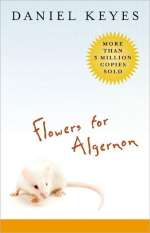 Flowers for Algernon by Daniel Keyes (a short story, then a novel) still gets me, even after all these years. A series of diary entries from Charlie, who has an IQ of 68 and is given an experimental intelligence-enhancing surgery. Will it raise his IQ? Will it change his life? We accompany Charlie on his journey by way of his personal “progress reports,” which begin with heartbreaking misspellings and construction, then evolve into brilliantly intelligent and mindful entries. And then … I dare you not to cry.
Flowers for Algernon by Daniel Keyes (a short story, then a novel) still gets me, even after all these years. A series of diary entries from Charlie, who has an IQ of 68 and is given an experimental intelligence-enhancing surgery. Will it raise his IQ? Will it change his life? We accompany Charlie on his journey by way of his personal “progress reports,” which begin with heartbreaking misspellings and construction, then evolve into brilliantly intelligent and mindful entries. And then … I dare you not to cry.
Amazon | Barnes & Noble | IndieBound | Bookshop
 If on a Winter’s Night a Traveler by Italo Calvino — also a true classic. A series of mysterious and mystical short stories that meld and morph together into a novel. Even the chapter titles, read from first to last, can work as a story of their own. This was one of the first books (it was published in 1979) that made me think about how the form can inform the function.
If on a Winter’s Night a Traveler by Italo Calvino — also a true classic. A series of mysterious and mystical short stories that meld and morph together into a novel. Even the chapter titles, read from first to last, can work as a story of their own. This was one of the first books (it was published in 1979) that made me think about how the form can inform the function.
Amazon | Barnes & Noble | IndieBound | Bookshop
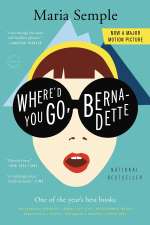 Where’d You Go, Bernadette is a glorious array of multiple elements. It shows us emails, letters, FBI documents, correspondence with a psychiatrist, and even an emergency room bill. They are put together in such a brilliant way that we deeply understand the story of Bernadette’s life. I wish I knew how Maria Semple’s brain worked. I can’t believe this came out in 2012 — it is so brilliantly contemporary.
Where’d You Go, Bernadette is a glorious array of multiple elements. It shows us emails, letters, FBI documents, correspondence with a psychiatrist, and even an emergency room bill. They are put together in such a brilliant way that we deeply understand the story of Bernadette’s life. I wish I knew how Maria Semple’s brain worked. I can’t believe this came out in 2012 — it is so brilliantly contemporary.
Amazon | Barnes & Noble | IndieBound | Bookshop
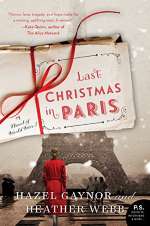 Last Christmas in Paris by Heather Webb and Hazel Gaynor reveals the heartbreaking and poignant relationship of Evie and Thomas as they battle the grim realities of World War I. This riveting historical novel reveals how honest — or not — people can be in their letters. And it proves how powerful letters can be at the time they are first read — and how, years later, they do not lose that power. (BookTrib’s review.)
Last Christmas in Paris by Heather Webb and Hazel Gaynor reveals the heartbreaking and poignant relationship of Evie and Thomas as they battle the grim realities of World War I. This riveting historical novel reveals how honest — or not — people can be in their letters. And it proves how powerful letters can be at the time they are first read — and how, years later, they do not lose that power. (BookTrib’s review.)
Amazon | Barnes & Noble | IndieBound | Bookshop
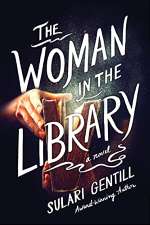 The ever-brilliant Sulari Gentill dazzles in her new The Woman in the Library. Describing it to you, I’m not quite sure I can do it justice, but it appears (and that’s all I’ll say) to be an author using a combination of her real life and suggestions from a fan to write her newest book. But again, you’ll have to figure this out for yourself. And you will cheer along the way.
The ever-brilliant Sulari Gentill dazzles in her new The Woman in the Library. Describing it to you, I’m not quite sure I can do it justice, but it appears (and that’s all I’ll say) to be an author using a combination of her real life and suggestions from a fan to write her newest book. But again, you’ll have to figure this out for yourself. And you will cheer along the way.
Amazon | Barnes & Noble | IndieBound | Bookshop
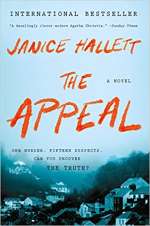 Speaking of standing ovations, The Appeal by Janice Hallett is one of the most clever uses of documents I have ever seen. Emails, letters, legal documents, playbills — and every sticky note. This riveting mystery completely mines the relationship between the mystery reader and the mystery — it is somehow interactive, tasking the reader to figure out what happened along with two engaging legal clerks. It is astonishingly original — ingenious and intricate and so much fun to read.
Speaking of standing ovations, The Appeal by Janice Hallett is one of the most clever uses of documents I have ever seen. Emails, letters, legal documents, playbills — and every sticky note. This riveting mystery completely mines the relationship between the mystery reader and the mystery — it is somehow interactive, tasking the reader to figure out what happened along with two engaging legal clerks. It is astonishingly original — ingenious and intricate and so much fun to read.
Amazon | Barnes & Noble | IndieBound | Bookshop
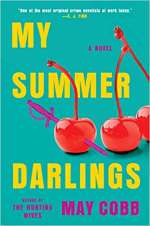 May Cobb’s eagerly awaited My Summer Darlings is coming this spring. Her deviously clever and reader-manipulating structure (that’s a good thing) uses two standard points of view combined with one character’s diary entries, and reveals how powerful a journal can be. After all, journals are written with brutal honesty, without any filter, and allow the reader to know more than the other characters know. Or, we realize, as we happily eavesread, possibly, the diarist is lying. (BookTrib’s review of May Cobb’s The Hunting Wives.)
May Cobb’s eagerly awaited My Summer Darlings is coming this spring. Her deviously clever and reader-manipulating structure (that’s a good thing) uses two standard points of view combined with one character’s diary entries, and reveals how powerful a journal can be. After all, journals are written with brutal honesty, without any filter, and allow the reader to know more than the other characters know. Or, we realize, as we happily eavesread, possibly, the diarist is lying. (BookTrib’s review of May Cobb’s The Hunting Wives.)
Amazon | Barnes & Noble | IndieBound | Bookshop
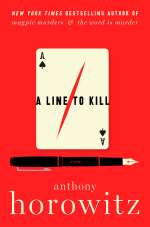 The brilliant Anthony Horowitz breaks every rule imaginable in A Line to Kill, one of a series starring Detective Hawthorne and his Watson-esque sidekick Anthony Horowitz. It’s true. Ish. Anthony Horowitz the author puts himself, Anthony Horowitz the author, into the book. His character is an author in search of fodder for a novel who has latched himself onto a detective. But, of course, we know it worked, because you’re reading the novel! And if your brain is spinning, that is part of the fun. (BookTrib’s review.)
The brilliant Anthony Horowitz breaks every rule imaginable in A Line to Kill, one of a series starring Detective Hawthorne and his Watson-esque sidekick Anthony Horowitz. It’s true. Ish. Anthony Horowitz the author puts himself, Anthony Horowitz the author, into the book. His character is an author in search of fodder for a novel who has latched himself onto a detective. But, of course, we know it worked, because you’re reading the novel! And if your brain is spinning, that is part of the fun. (BookTrib’s review.)
Amazon | Barnes & Noble | IndieBound | Bookshop
 Hannah Morrissey’s wonderful Hello, Transcriber uses the typewritten text of the dictated transmissions of police reports. Punctuation and all (comma) reveal the riveting story of a police transcriber who gets caught up in a case. It is all the more revealing as we almost hear the detectives’ voices in the transcriber’s ear — a one-sided Scheherazade-in-reverse communication that turns into something altogether different. (BookTrib’s review.)
Hannah Morrissey’s wonderful Hello, Transcriber uses the typewritten text of the dictated transmissions of police reports. Punctuation and all (comma) reveal the riveting story of a police transcriber who gets caught up in a case. It is all the more revealing as we almost hear the detectives’ voices in the transcriber’s ear — a one-sided Scheherazade-in-reverse communication that turns into something altogether different. (BookTrib’s review.)
Amazon | Barnes & Noble | IndieBound | Bookshop
It’s difficult enough to write a book, as we all know. But these authors are brave enough to raise the bar on their own imaginations — and as a result, they do the same for their grateful readers.

Flowers for Algernon by Daniel Keyes
Flowers for Algernon by Daniel Keyes (a short story, then a novel) still gets me, even after all these years. A series of diary entries from Charlie, who has an IQ of 68 and is given an experimental intelligence-enhancing surgery. Will it raise his IQ? Will it change his life? We accompany Charlie on his journey by way of his personal “progress reports,” which begin with heartbreaking misspellings and construction, then evolve into brilliantly intelligent and mindful entries. And then … I dare you not to cry.
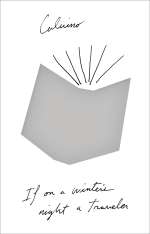
If on a Winter’s Night a Traveler by Italo Calvino
If on a Winter’s Night a Traveler by Italo Calvino — also a true classic. A series of mysterious and mystical short stories that meld and morph together into a novel. Even the chapter titles, read from first to last, can work as a story of their own. This was one of the first books (it was published in 1979) that made me think about how the form can inform the function.

Where’d You Go, Bernadette by Maria Semple
Where’d You Go, Bernadette is a glorious array of multiple elements. It shows us emails, letters, FBI documents, correspondence with a psychiatrist, and even an emergency room bill. They are put together in such a brilliant way that we deeply understand the story of Bernadette’s life. I wish I knew how Maria Semple’s brain worked. I can’t believe this came out in 2012 — it is so brilliantly contemporary.

Last Christmas in Paris by Heather Webb, Hazel Gaynor
Last Christmas in Paris by Heather Webb and Hazel Gaynor reveals the heartbreaking and poignant relationship of Evie and Thomas as they battle the grim realities of World War I. This riveting historical novel reveals how honest — or not — people can be in their letters. And it proves how powerful letters can be at the time they are first read — and how, years later, they do not lose that power. (BookTrib’s review.)

The Woman in the Library by Sulari Gentill
The ever-brilliant Sulari Gentill dazzles in her new The Woman in the Library. Describing it to you, I’m not quite sure I can do it justice, but it appears (and that’s all I’ll say) to be an author using a combination of her real life and suggestions from a fan to write her newest book. But again, you’ll have to figure this out for yourself. And you will cheer along the way.

The Appeal by Janice Hallett
Speaking of standing ovations, The Appeal by Janice Hallett is one of the most clever uses of documents I have ever seen. Emails, letters, legal documents, playbills — and every sticky note. This riveting mystery completely mines the relationship between the mystery reader and the mystery — it is somehow interactive, tasking the reader to figure out what happened along with two engaging legal clerks. It is astonishingly original — ingenious and intricate and so much fun to read.

My Summer Darlings by May Cobb
May Cobb’s eagerly awaited My Summer Darlings is coming this spring. Her deviously clever and reader-manipulating structure (that’s a good thing) uses two standard points of view combined with one character’s diary entries, and reveals how powerful a journal can be. After all, journals are written with brutal honesty, without any filter, and allow the reader to know more than the other characters know. Or, we realize, as we happily eavesread, possibly, the diarist is lying. (BookTrib’s review of May Cobb’s The Hunting Wives.)

A Line to Kill by Anthony Horowitz
The brilliant Anthony Horowitz breaks every rule imaginable in A Line to Kill, one of a series starring Detective Hawthorne and his Watson-esque sidekick Anthony Horowitz. It’s true. Ish. Anthony Horowitz the author puts himself, Anthony Horowitz the author, into the book. His character is an author in search of fodder for a novel who has latched himself onto a detective. But, of course, we know it worked, because you’re reading the novel! And if your brain is spinning, that is part of the fun. (BookTrib’s review.)
Hello, Transcriber by Hannah Morrissey
Hannah Morrissey’s wonderful Hello, Transcriber uses the typewritten text of the dictated transmissions of police reports. Punctuation and all (comma) reveal the riveting story of a police transcriber who gets caught up in a case. It is all the more revealing as we almost hear the detectives’ voices in the transcriber’s ear — a one-sided Scheherazade-in-reverse communication that turns into something altogether different. (BookTrib’s review.)




